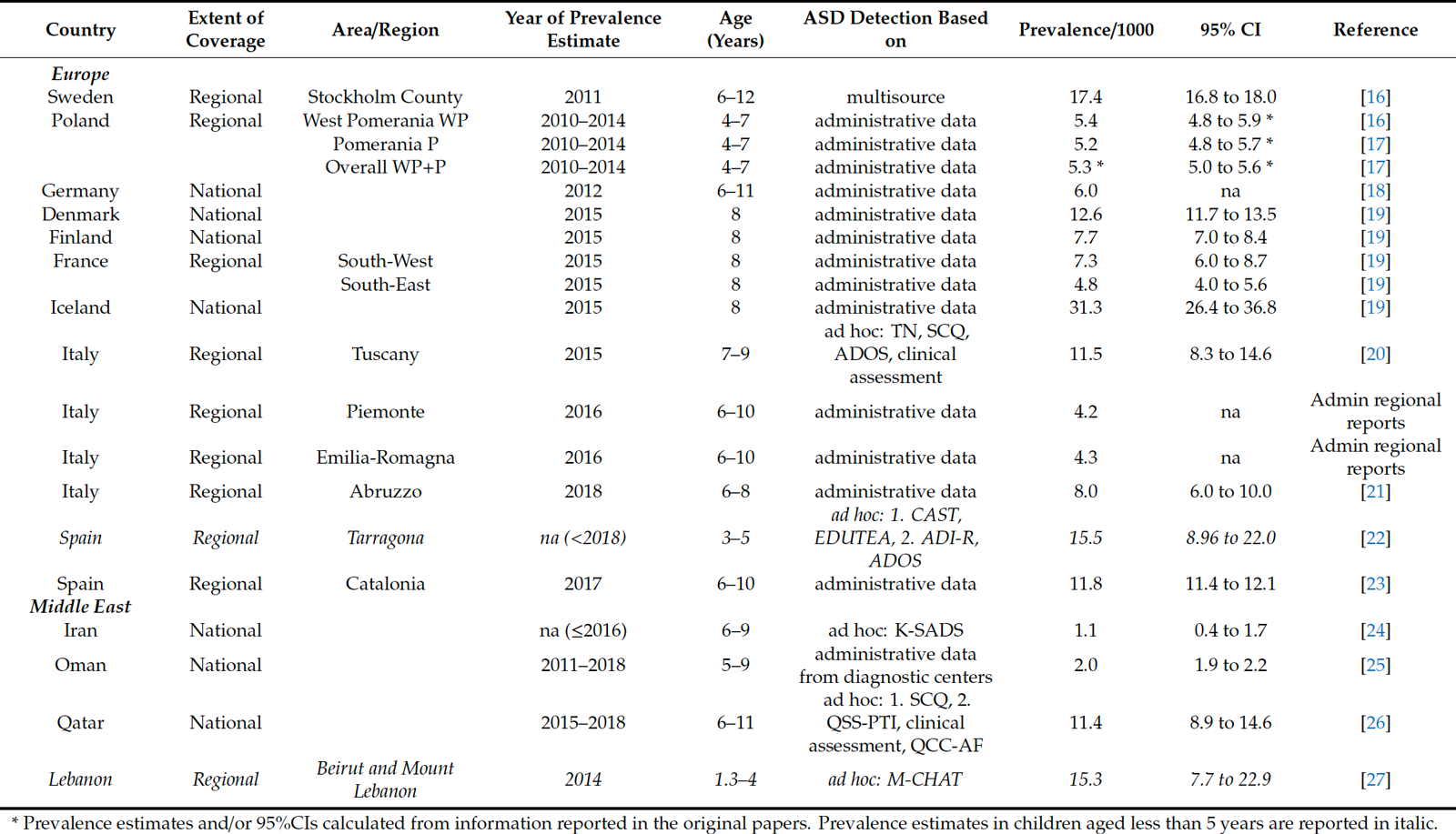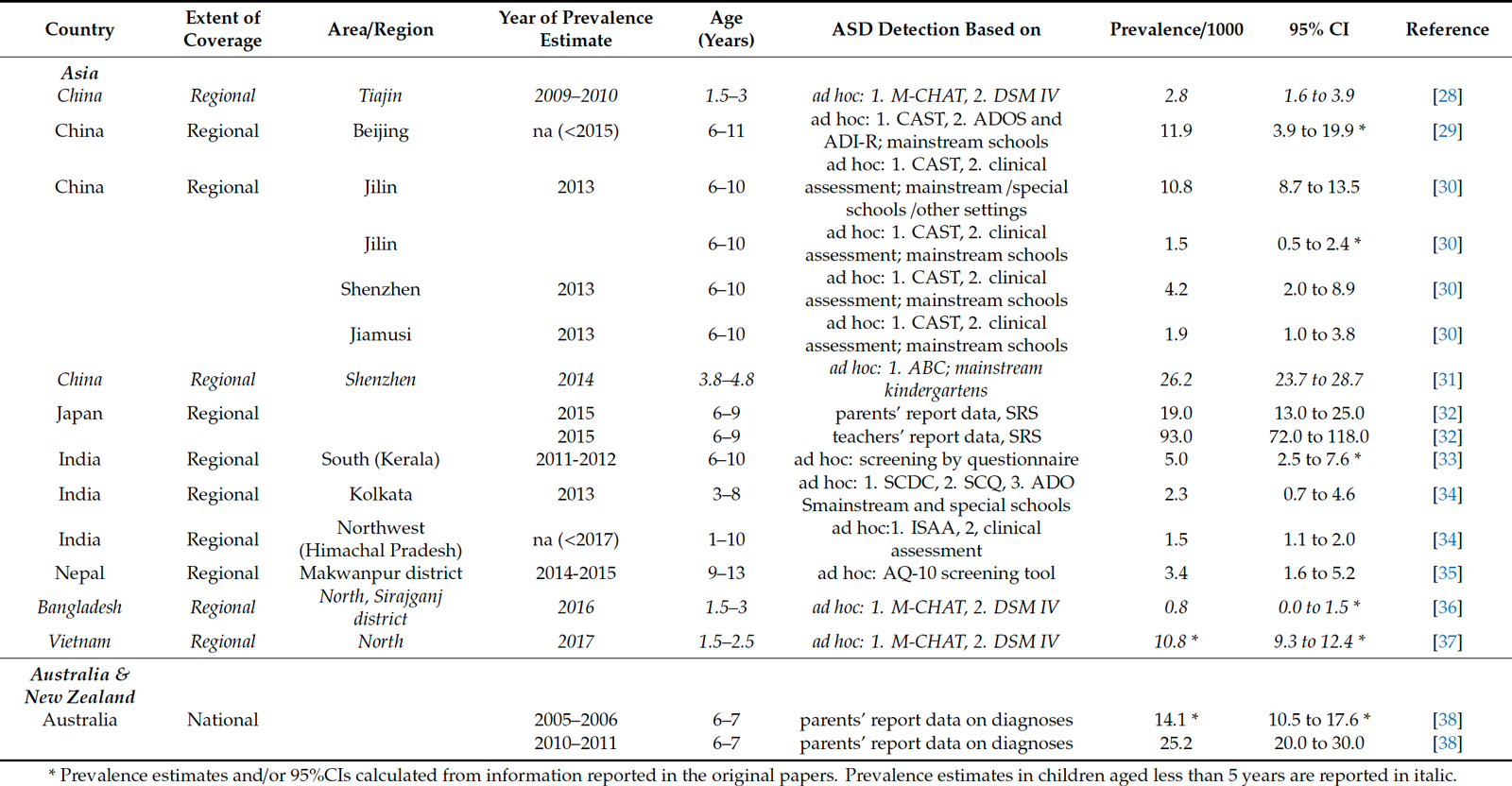Researchers Still Stumped
Three large epidemiological studies released this spring show a continuing trend, autism rates are increasing, not just in the United States, but across the globe. Regrettably, researchers and scientists still do not understand why.
American Data
As covered earlier by SafeMinds Shares, the CDC released a new study through their Autism and Developmental Disabilities Monitoring (ADDM) Network, which showed 1.85% of American 8 year olds hold an autism diagnosis. The ADDM Network has tracked the rate of autism in the United States since the year 2000. The network uses a two-phase process to identify cases, the first of which relies on surveillance by both medical and educational service providers. The second phase uses experienced clinicians to review the abstracted information from the first phase to determine autism spectrum disorder (ASD) cases. Since the beginning of the ADDM network, the rate of ASD has almost tripled from 1 in 150 in 2000 to 1 in 54 today. Previous ADDM reports have demonstrated that a disparity in autism diagnoses based on sex. This reporting period was no different, autism is still 4 times as common in boys as girls.
Worldwide Data
The most recent CDC Data and Statistics on ASD reports that studies in Asia, Europe and North America have identified similar prevalence rates to those observed in the United States. A brand-new study out of Italy goes further and examines international autism rates since 2014.
While conducting their research, the Italian team ran into challenges while gathering data. Differing methodologies for data collection were used in the countries surveyed. The Discussion section of the study addresses this issue. The authors state, “The analysis of the literature on ASD studies published since 2014 confirms a high variability of prevalence estimates worldwide. This variability is still accompanied by methodological differences among the performed studies that concern how cases are detected, which population is involved in, and, to a lesser measure, how cases are defined.”
The team ended up using a regression analysis to counteract the data variability. The researchers were then able to interpret the longitudinal data of autism incidence across the world. The study ultimately discovered increased prevalence rates over the last 20 years, with the year 2010 showing a particularly higher surge. Overall, the worldwide autism prevalence rates ranged from 0.8/1000 in the North, Sinrajganj district of Bangladesh to 93/1000 in Japan. See tables 2-4 for individual country’s ASD prevalence.
Table 2.
Summary of prevalence studies published since 2014 in Europe and Middle-East.

Table 3.
Summary of prevalence studies published since 2014 in Asia, Australia & New Zealand.

Table 4.
Summary of prevalence studies published since 2014 in North America.

Korean Data
A third study, Prevalence and Incidence of Developmental Disorders in Korea: A Nationwide Population Based Study, breaks new ground as few epidemiological studies related to developmental disorders (DDs) have been conducted in Asia. To collect data, the authors used information from Korea’s National Health Insurance Sharing Service (NHISS). Every Korean citizen is registered at the Nation Health Insurance Service (NHIS) as recipients of either medical care or health insurance. NHIS collects data relating to demographics, outcomes and types of services received from the registrants. NHISS is the arm of the NHIS that shares health data.
The authors examined all DDs, not just autism, in two cohorts. The first cohort included children ages 0-2 and the second cohort looked at children ages 3-6. The research team looked at data from 2003 until 2017 split into three different time periods (2003-2007), (2008-2012), and (2013-2017).
The findings of this Korean study had similarities to the American ADDM study and the Italian study on international ASD prevalence.
Much like the higher rates of autism the ADDM found in American boys, Korean boys are more likely to be affected with a developmental disorder. The authors state, “In all sub-conditions, boys had at least 1.3 to 4.2 times higher incidence rate than girls did, indicating a higher tendency for boys to have DDs.”
Similar to the Italian study that found a surge in autism prevalence around the year 2010, this study found a rapid increase in roughly the same time period. The research team declared, “This nationwide population-based study shows an evident increase over the 15-year period in both the incidence rate and prevalence of DDs among the younger population in Korea. When analyzing trends by the three time period groups, a more rapid increase of the incidence rate in the second group 2008-2012 was observed.”
The study concludes by shining a light on the increase of DDs in Korea over the past 15 years but also acknowledged a disparity in DD diagnoses in lower income families. The team attributes this gap to poor accessibility to clinics or hospitals for examination becoming a barrier for the detection of DDs for these families.
Scottish Letter in BMJ
The British Medical Journal (BMJ) published a letter from Scottish scientists outlining an autism audit recently done to look at ASD prevalence in Scotland. The researchers, concerned about the rising prevalence of ASD, stated at the beginning of the letter, “…if the condition is genetic in etiology, it cannot be increasing rapidly. Proposed explanations for a spurious increase include greater awareness of autism in the general population, misreporting in survey data, changes in diagnostic criteria, lower diagnostic thresholds, and a shift from other developmental diagnoses.”
The team accessed electronic records of autism diagnoses of children below the age of 6 made by pediatricians in the years 2011-2019 to ascertain if the increase in ASD was real. During this time period, the researchers found that the cumulative incidence rate rose from .6% to 1.85%, which happens to be the most recent rate of autism in 8-year-olds living in the United States.
The scientists found that the diagnostic process was highly compliant with the Scottish Intercollegiate Guidelines Network. Nearly all children had documented assessments of physical health and general development. Most children also had reports from specialists like speech language therapists and their diagnosis was agreed upon by multidisciplinary consensus.
Just like the scientists in the other epidemiological studies, the Scottish team also reported more males holding an autism diagnosis than females. The male-to-female ratio averaged 5:1 for birth years 2010-2013. Although they did mention that the number of girls diagnosed with autism had increased over the years. Curiously, there was another similarity, the authors also identified 2010 as a year where Scottish schools reported a steady increase of autism diagnoses.
The Scottish team ended their letter to the BMJ bluntly by stating, “In summary, the rate of diagnosis has increased, and there is no evidence of over-reporting by Scottish primary schools. None of the proposed mechanisms for a spurious increase in the prevalence of ASD is supported by our data. The rise in ASD remains unexplained and pediatricians may be witnessing a real increase in the true incidence. Mechanisms other than DNA polymorphism should be considered to explain the heritability of autism.”
References
SafeMinds Shares. Autism Prevalence Still Rising per CDC. March 26, 2020
Matthew J. Maenner, Kelly A. Shaw, Jon Baio et al. Prevalence of Autism Spectrum Disorder Among Children Aged 8 Years — Autism and Developmental Disabilities Monitoring Network, 11 Sites, United States, 2016. MMWR Surveillance Summaries / Vol. 69 / No. 3. March 27, 2020.
Flavia Chiarotti and Aldina Venerosi. Epidemiology of Autism Spectrum Disorders: Review of Worldwide Prevalence Estimates Since 2014. Brain Sciences. May 1, 2020
Sung Sil Rah, Soon-Beom Hong. Ju Young Yoon. Prevalence and Incidence of Developmental Disorders in Korea: A Nationwide Population-Based Study. Journal of Autism and Developmental Disorders. April 2020.
Michael Andrew Colvin, Leanne Brennan, Kristy Hogg, Helen Taylor, Kathleen Skinner. More Autism? Audit of the diagnosis in Scottish children. British Medical Journal Arch Dis Child. 22 March 2020


